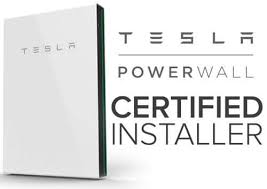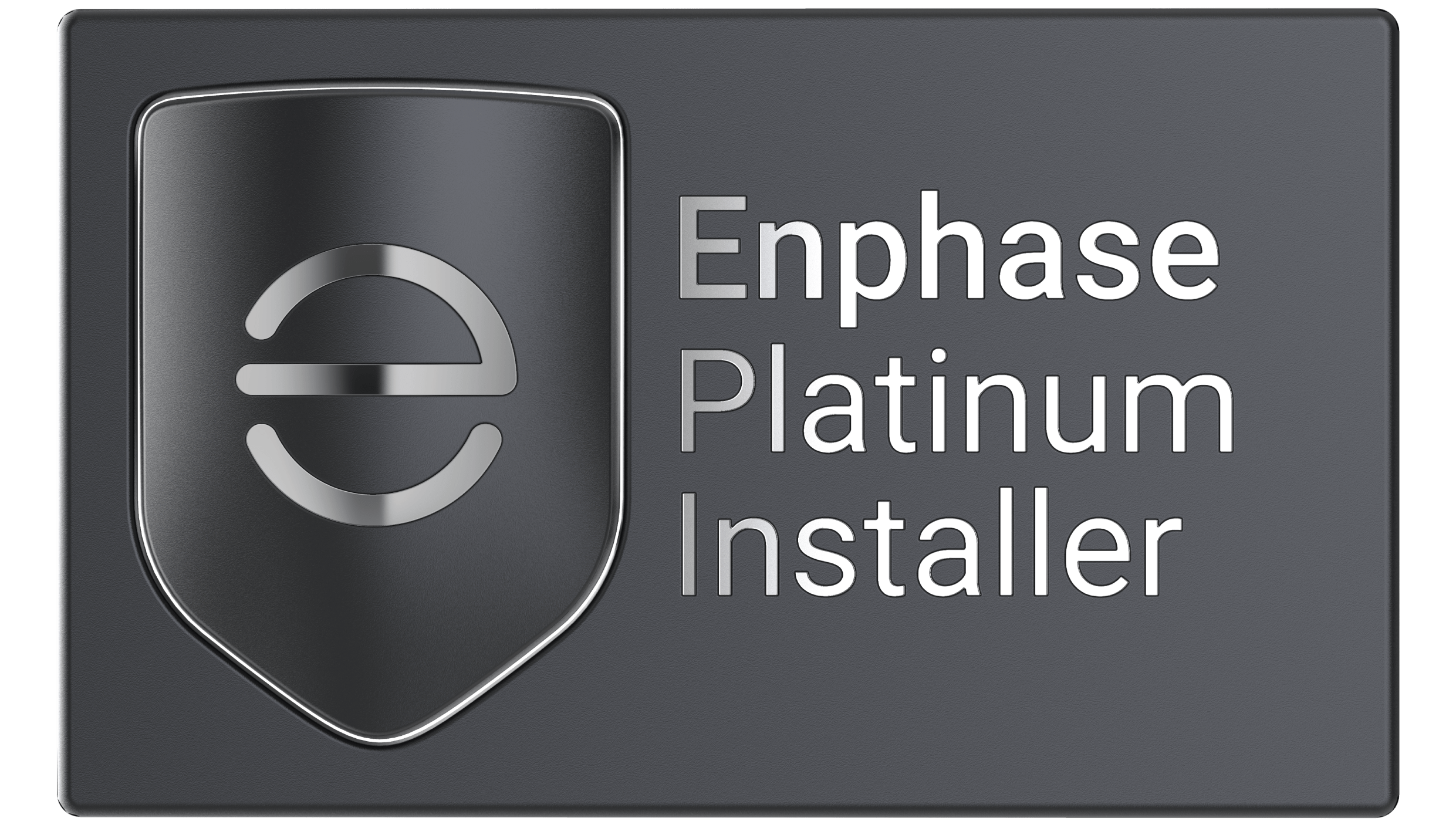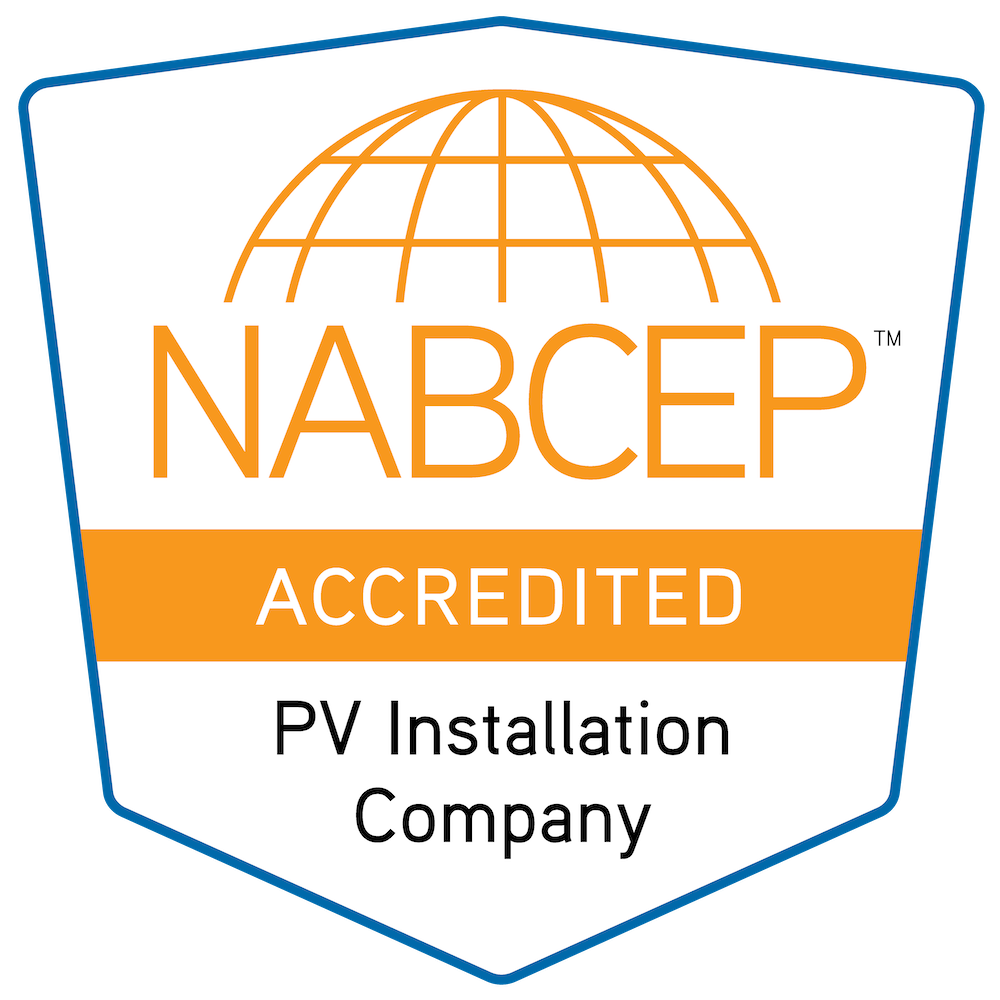Solar City’s Florida expansion not surprising, likely calculated after Amendment 1

This morning, the AP reported that Solar City, the nation’s largest solar installer will open a Florida facility.
Orlando‘s and Jacksonville‘s A1A Solar – Florida’s largest rooftop residential solar panel installer – isn’t surprised:
“I’m glad there’s reputable competition coming to the Sunshine State. We’re not surprised at all that they watched Amendment 1 and waited for it to fail before making such a move. The Sunshine State is a very attractive state for rooftop solar, especially as local utilities were just granted the right to increase their rates.” — A1A Solar’s founder and CEO Pete Wilking, a combat veteran
Wilking’s correct. This announcement comes immediately following the Florida Public Service Commission approved an $811 million rate hike sought by Florida Power & Light. FPL has about 4.8 million Florida customers.
Editor’s Note: Pete Wilking is available for news interviews. Contact Pete at A1A Solar today at 904-239-2001 or 407-917-0975.
What do we want? SOLAR ROOFS! When do we want them? NOW!
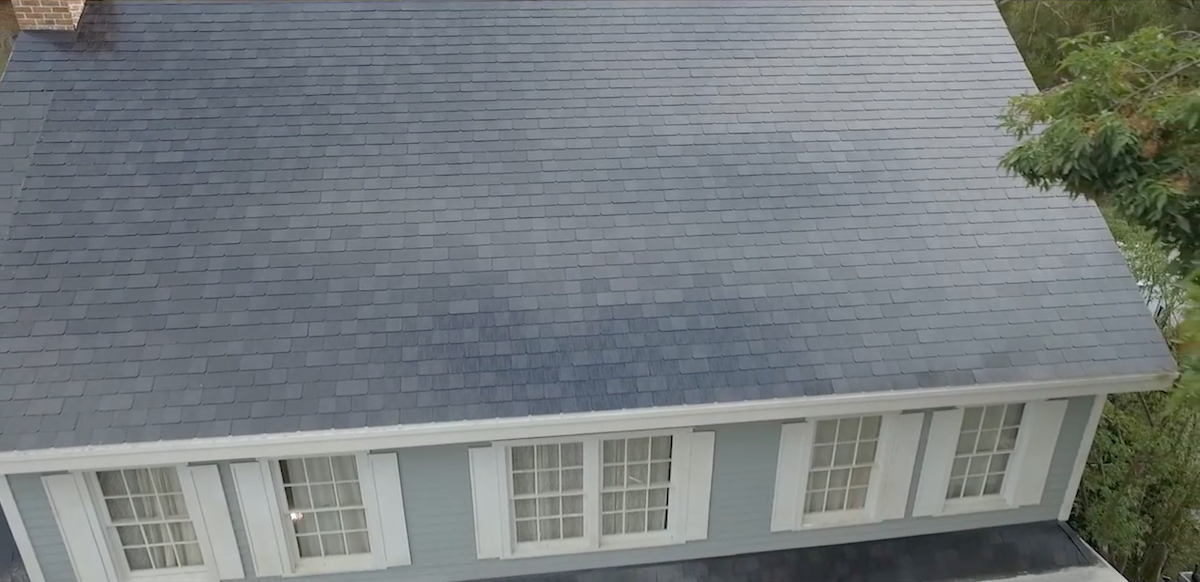

Last month, Tesla shareholders approved the two-billion dollar acquisition of Solar City, the nation’s largest player in the solar industry. Solar City will now operate as a wholly-owned subsidiary of Tesla. Following this acquisition, visionary entrepreneur Elon Musk rolled out two tantalizing surprises: Solar roofs, and the new Powerwall 2.0. What does this mean for Floridians who are making the switch to solar?
Solar Roofs
A1A Solar Contracting has partnered with Tesla as an authorized installer of its charging stations, and we are intrigued by these new product roll-outs. Clients are already inquiring about the solar roofs, and wondering whether they should wait to install traditional PV solar arrays, holding out for the new product line promised by Tesla. The answer is no, and here’s why.
Price
The solar roofs will be pricey. Despite initial claims from Musk that they will cost less than a traditional roof, according to Bloomberg, the solar shingles will cost twenty times more than asphalt shingles, without including the significant price of installation. There aren’t many roofers out there who will be savvy enough to handle the solar and electric components of the roofs.
Tesla anticipates that because the solar shingles weigh far less than traditional shingles, the decreased shipping cost will make their prices competitive with high-end roofing materials. So, if your roof is going to cost upwards of $70,000, then the economics start to make sense. The solar shingles come in four distinct styles: Tuscan Glass, Slate Glass, Textured Glass, and Smooth Glass.
The roof looks incredibly cool, but the price is definitely out of range for the average homeowner, who will invest roughly $12,000- $15,000 on a standard thirty-year roof. In today’s dollars, it is far more cost-effective for homeowners in Florida to install a new traditional roof and add a PV array.
Availability
Tesla predicts a “slow-rollout” at the end of 2017. This likely means that orders may start to ship in California and the Southwest, where Solar City maintains a robust presence. In our area, Solar City does not have an office, since this area does not offer some of the incentives for net- metering that other parts of the country do.
It’s highly unlikely, therefore, that the solar roofs will actually be available in North Florida anytime soon. In fact, unless either SolarCity decides to offer the shingles as a wholesale product or the shingles are otherwise manufactured for resale, no one except SolarCity will even have access to the product.
Potential changes to net-metering agreements
Another factor for homeowners to consider is that the utilities won’t give up on their long-term desire to thwart the growth of rooftop solar in Florida. A consumer who waits five years to install PV on their roof because they’re holding out for the sleek solar shingles my find that the economics have shifted by then, and that because the rate structure has been altered, the solar roofs aren’t nearly as appealing. Meanwhile, they will have missed out on saving thousands of dollars every year, and increasing the value of their home.
The bottom line is that while we embrace this new technology, it’s not ready in Florida yet and we really don’t see it becoming available anytime soon. It doesn’t make financial sense to delay getting PV in the hopes that the rollout comes to Northeast Florida within the next few years.
Powerwall 2.0
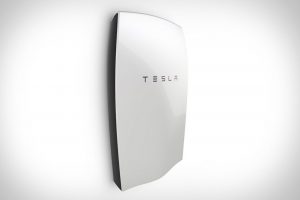
We were so excited with the announcement and anticipation of first version of the Tesla Powerwall, but definitely disappointed with the somewhat flawed end product. The upgraded version, however, appears to be much more robust, with 14 KWh of storage, and a surprisingly low price point. While the first Powerwall was not designed for grid- down scenarios, the newer lithium-ion battery will allow consumers to power most of their homes even when the grid goes down.
At A1A Solar, we look forward to working with Tesla to bring this new product to the market as it becomes available, and the Solar Edge inverters we use on the PV arrays we install are compatible with the Powerwall. The new batteries are slated for release in limited markets in early 2017.
The premium sonnenBatterie that A1A Solar offers now is flexible and powerful, and for consumers interested in the ability to maintain their lifestyle when the grid goes down, this product is unsurpassed, with over 12,000 installs in Europe, and a growing market here in the United States.
Overall, we are thrilled by these emerging technologies and the opportunities they will represent in the future for our clients over the coming decades. BUT….PV solar is a mature technology now, and there’s no reason to delay going solar now. You’ll start saving money as soon as your system comes online, and can look forward to a tremendous return on your investment for years to come.
Proposed JEA solar changes increase costs and threaten local jobs

JACKSONVILLE, Fla. (March 2, 2016) – JEA announced plans to generate its own solar power and charge its customers a premium for it. Meanwhile, the utility also intends to alter its net-metering policies, lowering consumers’ return on investment for rooftop solar.
JEA’s SolarSmart program, which modifies the utility’s current policy, implements changes at the expense of its customers, say some concerned citizens and local business owners.
If the JEA board approves SolarSmart, JEA customers would have the option to “go green” and purchase up to 100 percent of their electricity from utility-owned solar panels.
While that may sound good on the surface, consumers should understand the full impact of the changes – especially on their wallets.
SolarSmart increases the cost of energy for customers who opt into the program and it reduces the amount JEA pays businesses and homeowners who provide private solar power to JEA. The proposed SolarSmart plan would cost customers who opt for green energy more than JEA’s regular rate and, at the same time, would reduce JEA’s buyback rate for power it purchases back from private solar panels.
The payback reduction will essentially destroy the local rooftop solar energy market in Northeast Florida by rendering rooftop solar power non-economical. This comes just at a time when solar power has become a financially viable option for the average homeowner.
SolarSmart could also mean the end of local private solar jobs. One Northeast Florida company, A1A Solar Contracting Inc., which provides residential and commercial solar electric installations in Northeast Florida and Southeast Georgia, employs 50 people to service the demand for rooftop solar in Jacksonville. The proposed change threatens those jobs and others as customers stop finding solar energy a feasible renewable energy option in the area.
“With this proposed change, JEA is moving our community in the wrong direction for green energy,” said Pete Wilking, president of A1A Solar. “Renewable energy is the future,” Wilking said. “Jacksonville has an opportunity to define itself as a forward-thinking, vibrant community of tomorrow with its use of solar power.”
As one of the cleanest energy sources available, solar power is safer and greener than operating coal or nuclear power plants. The most successful and progressive rooftop solar markets, like Austin, Texas, and the state of Minnesota, uphold policies that encourage both municipal and privately owned solar with great success.
Opponents of JEA’s proposal, including A1A Solar, Florida Solar Energy Industries Association, Sierra Club, U.S. Green Building Council and others, are encouraging consumers to share their thoughts on this proposed plan. One way to do this is by attending the upcoming Community Forum on Solar in Florida. The USGBC will host the forum on Wednesday, March 9, from 6:30–8 p.m. at Jacksonville University’s Gooding Auditorium, 2800 University Blvd. N.
Vote NO on 1 in November!
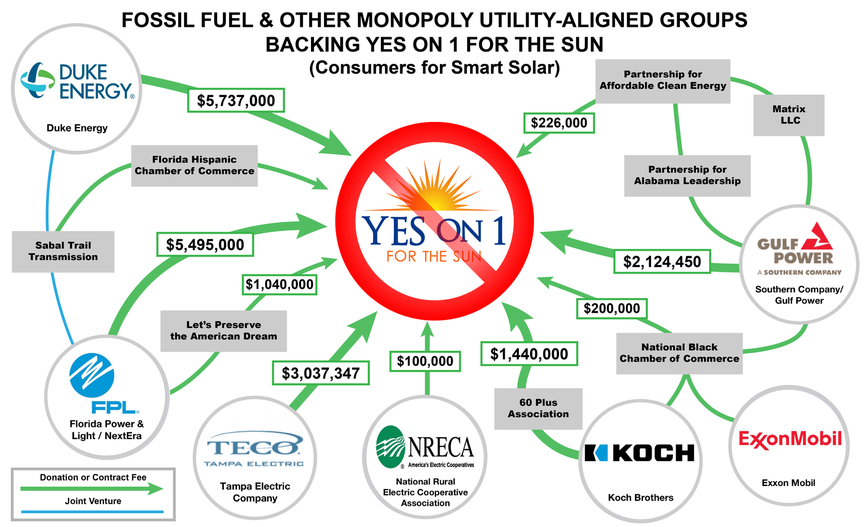

Don’t be mislead this election year! Follow the money, Amendment 1 was written by and paid for by the for profit, Big Energy utility companies and fossil fuel backers like Duke Energy, Florida Power & Light, and the Koch brothers.
VOTE NO ON 1
Here’s How You Can Support Solar this Election Year!
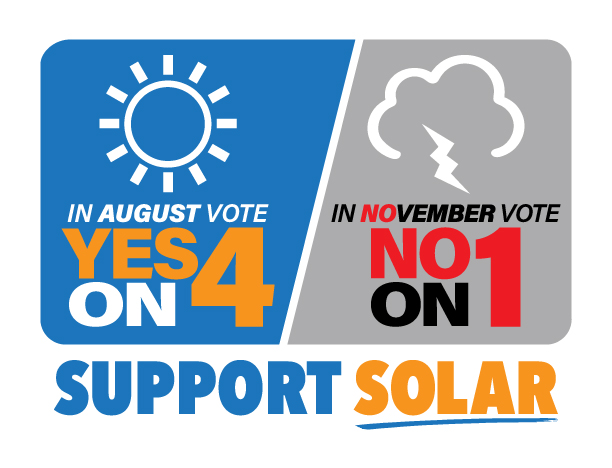
Rooftop solar is a benefit to ratepayers and utilities

While all eyes are on the 2016 Presidential election, the ballot on November and the primary in August will contain two amendments vital to the future of Florida.
The utilities mounted a slick advertising campaign, and paid an army of canvassers around the state to place an amendment on the November ballot that appears to be pro-solar, but which is anything but. Essentially, the amendment gives utilities the ability to regulate rooftop solar, which is like giving the fox the keys to the henhouse.
In other states, and even within Florida, utilities don’t view solar as a threat, and in these areas, like Orlando, the utilities actually add value to the distributed energy rooftop solar provides. FPL and JEA fall on the opposite end of that spectrum, and have worked vigorously to thwart the growth of residential rooftop solar in their service areas. The most common argument they use is that rooftop solar customers are subsidized by non-solar customers, going so far as to frame the issue in terms of class warfare and making the argument that solar is something that only elites can afford, and that those people are taking advantage of the poor. This is absurd. A recent article by the Brookings Institution, a non-partisan think-tank with a sterling reputation weighed in on this issue, and dismantled the argument made by utilities.
Findings from the Brookings Institution
Mark Muro, a Senior Fellow and Policy Director published an article in May which punches huge holes in the arguments that JEA and FPL propagate. He looked at studies performed by utilities around the country, and by Public Utilities Commissions (which regulate utilities) and combined the literature. Here is the central finding of Mr. Muro’s research:
“So, what does the accumulated nation literature on costs and benefits of net metering say? Increasingly it concludes—whether conducted by PCUs, national labs, or academics—that the economic benefits of net metering actually outweigh the costs and impose no significant cost increase for non-solar customers. Far from a net cost, net metering is in most cases a net benefit—for the utility and for non-solar rate payers.”
Utilities: The old business model must change
Our utilities are grappling with how to adapt to the changing and evolving energy landscape. The utilities that view distributed rooftop solar as a threat are looking at flat revenues and concluding that one way to solve that problem is by hitting solar customers with monthly charges and decreasing the buy-back rates. This is not the solution, and many utilities, states, and Public Utilities Commissions are reaching the same conclusion.
In Florida the discussion is clouded by the fact that the PUC is essentially in the pockets of the utilities themselves. Unless the utilities alter their way of thinking, embracing, rather than fighting residential rooftop solar, the issue will persist.
The fact is, net metering allows utilities the ability to sell clean energy to their customers without investing any money in infrastructure. Homeowners themselves are paying for the array and installation. Solar installations make expensive grid upgrades unnecessary, saving the utilities millions. Solar takes pressure off oil and gas generation at peak demand times, and lowers rates.
In 2014, Minnesota’s Public Utility Commission found that the value of solar was 3 to 3.5 cents more per kilowatt hour than the retail rates, when the cost of carbon and avoided costs of new power plants and gird upgrades was factored in.
Part of the problem in Florida is that the utilities increase revenue and profits by implementing costly infrastructure upgrades, so they tend not to factor these savings in when looking at rates for solar.
The solution is that the utilities themselves evolve and view themselves as distributors of energy, rather than the sole providers of power. This challenges the entrenched mindset that the utility should have a monopoly on generation. Only by looking at the available research and concluding that they’ve got to change their practices and overall outlook will this perception change.
What Can We Do?
- Vote yes in August, and no in November.
- Call your city-councilman.
- Call your Congressman.
- Talk to your neighbors, and put out a yard sign.
Eventually, utilities, even in Florida, will embrace the spread of rooftop solar, it’s just a matter of time. They cannot stop the future, and solar is the future, here in the Sunshine State.
So how much does it cost?

Pitfalls of online solar calculators.
Solar power is experiencing tremendous growth in Northeast Florida, and A1A Solar recently earned one of the top spots on Jacksonville Business Journal’s list of the fifty fastest growing companies in the city. The surge of interest in rooftop solar over recent years has given rise to a bewildering variety of online solar calculators.
How do they work?
Most online solar calculators are generic, and come up with an estimate without enough data to make the numbers relevant. A homeowner inputs an address and average monthly utility bill, and the calculator spits out a dollar amount along with the number of panels it will take to offset the electric bill.
Relying on one of these calculators for a realistic estimate is like going to Web MD for a serious medical diagnosis. There are too many variables unique to each home which makes these calculators absurdly unreliable. We have experimented with them, inputting our own homes into the calculators, and have yet to find one which is on the money.
What are the variables?
- Utility rates: Rates vary, and unless you know exactly what you are paying per-kilowatt hour, the financial side is going to be completely skewed from the beginning.
- Weather patterns: Some calculators do factor in weather. Cloud cover impacts solar production, and the best online calculators will account for historic weather patterns when arriving at an estimate.
- Shade: Shade has a direct impact on solar production, so knowing how much loss your system will or will not experience due to shading is of vital importance. Most online calculators do not factor in shade at all. Even the ones that do rely on out of date satellite photos, so if a tree has been removed or has grown over the last 5 years, the calculator does not acknowledge the difference.
- Roof: Most online calculators won’t recognize the slope of your roof or any restrictions like shading from chimneys, penetrations by vents, or offsets from the roof. It’s also important to know the type of roof you have. A metal roof requires a different fastening system than a traditional shingled roof. How old is your roof? If you are planning on replacing it within the next few years, you may qualify for a tax credit on the roof if you go solar. The calculator does not know this information.
- Electric panel: Depending on the size of the array you need, an electric panel upgrade may be required. There is no way for the online calculator to calculate this.
- Efficiency measures: If you are a candidate for a hybrid-electric hot water heater, this can offset over ten percent of your usage. The calculator won’t recognize this.
- Historic usage: In Florida, our usage tends to spike during the summer months. When most homeowners use an online calculator, they don’t use an exact number of kilowatt hours used for the year, but instead input a price range for their bill. This creates a great gap between actual usage and the estimated number of panels required to offset the bill over the course of the entire year. The number may be a gross underestimate, or it may swing the other way, depending on the bill amount you use. Either way, it won’t be accurate.
So, how much does it cost?
Even if you are only looking for a ball-park estimate, the only way to answer this question is to sit down with one of our solar consultants. They look for the variables listed above, and have your best interest at heart. Your consultant will design a system just for you and give you an honest price. Each home is different, and each client’s needs vary. You will receive not a ball-park estimate, but rather an exact price. You will also see the return on your investment in terms of monthly cash flow, the increase in value to your home, and the cost-avoidance over time.Your consultant will answer any questions you have, show you how solar works and how much you will save over the lifetime of the system. Each array is designed and integrated individually for every homeowner. Consults are free, and you are under no obligation.
Happy Independence Day!


The 4th of July holiday weekend is here. It’s got us thinking about independence, and more specifically, energy independence. There is something quintessentially American about leaving the grid. We are a fiercely independent people with no frontiers left to explore, yet the dream of the West still lives in us, that sense of self-reliance and freedom which gave birth to the greatest nation on Earth.
In this era of constant connectivity, globalization, and economic uncertainty, the allure of getting off the grid has drawn many people toward a simpler existence. There are various reasons folks are motivated to take that step, and our clients frequently speak with just a hint of longing for the ability to kiss the utility companies goodbye. In today’s post, we examine the recent phenomenon of “prepping,” and take a look at the way solar and battery back-up systems give homeowners the ability to become energy independent.
Why do it?
The number one reason to go off-grid is security in the event that the grid goes down. Our clients list a variety of reasons that this could happen, from simple scenarios like a hurricane, to events with greater implications like EMP attacks, economic collapse, and even war.
Electricity is something that most of us take completely for granted. When the grid is down, things get sticky and mean, and the longer it’s down, the worse things get. Having the capability to be self-reliant in that scenario makes many folks sleep better at night. For some, this means having a “bug-out” plan and a location out in the country where they’ll retreat to, while for others it means having their primary residence equipped to hold out indefinitely.
What does grid failure look like?
Floridians know how awful a few days without electricity can be. But what if it lasts longer? What happens? Without electricity, gas becomes almost impossible to obtain. Stations pump gas with electricity, so the station on the corner won’t be working. Those that are, in the event that they have generators, will charge insane prices. Gouging will be rampant for not only gasoline, but also essentials like water, food, and medicine. Unfortunately, without electricity, your credit card won’t work, and you won’t be able to run to the ATM to make a cash withdrawal, either.
These shortages lead inevitably to civil unrest. Even with Marshall Law and National Guard troops deployed, a month-long event would cost thousands of lives. People would fight and kill to protect and feed their families. Without refrigerators running, food will spoil, and without ovens to cook in, what food there is will be limited to dried and canned goods within a matter of days. Grocery stores will be looted first, along with big box stores, and anywhere else with a morsel.
Being Prepared
Most of us watch the weather, and if a hurricane looks like it’s definitely going to hit, we run out to Publix and by some batteries, candles, lots of water, and some cans of spaghetti. Preppers take the long approach, and they tend to be laying in supplies over long periods of time so that they are ready whenever the grid goes down. Here are some lessons we can learn from preppers:
- Have a “go-bag.” This can be a simple duffel bag that contains supplies to last the first 24-48 hours. Any medicine you need, some dried food, bottled water, antibiotics, a simple medical kit, a firearm and ammunition. If the sh@! hits the fan, you can grab the bag and go without notice.
- Stockpile canned goods
- Stockpile water
- Keep water-collection devices at home
- Build a well
- Keep a supply of gasoline ready for emergencies. Remember that gasoline goes bad after a couple of years, so change it out about once a year.
- Make a plan ahead of time. Discuss your plans with your family. If there is a hurricane on the way, where will we meet? If the grid goes down for some other reason, what are we going to do? If we’re headed for the country, what’s the best route, factoring in traffic jams and looters.
- Keep seeds on hand to plant a garden; better yet, plant a garden.
- Raise a few chickens. Build a coop, and you’ll never run out of eggs.
- Keep bicycles handy. This is a great way to get around if you’re trying to conserve gas, assuming it’s safe enough to travel.
- Have a security plan for your home. Keep hurricane shudders over windows. Maintain watches throughout the night to discourage intruders.
- Have friends. Preppers often have close friends that they make plans with. More people means greater security. Larger groups will make tougher targets to overwhelm.
Going off-grid with Solar
By combining your solar array with a battery-back up system, even if the grid fails, you will still have electricity. The solar array is tied to the grid, which means that you have the ability to draw from the grid when your usage exceeds the capacity of your solar system and the storage of your battery unit. But if the grid is out entirely, having a battery means that you disconnect from the grid and become self-sufficient. You are your own micro-grid.
The Sonnen battery, a product new to the American Market which has seen great success in Europe, is a fantastic solution and a great addition to your existing solar project. The battery is programmable and flexible, and gives you the ability to use in “self-consumption” mode so that it will not back-feed into the grid. During the day, your battery will be charged by your solar array, and at night you’ll pull electricity from the battery. The software includes weather prediction, which tells the battery how much to discharge and store, and homeowners can monitor the battery with a cell phone or computer. Furthermore, you can control your consumption by using “smart outlets,” which will only power on essentials. You decide what the battery operates. For example, you don’t want to run your air conditioner all the time if the grid is down. A better option is to run it during the day, and have a wall unit, which uses much less power. You won’t want to run your hot water heater, either, because it uses a tremendous amount of electricity. Batteries come in a variety of sizes to suit your needs, from the ECO 4, on up to the robust ECO 14.
Choosing your installer
As both batteries and solar become more prevalent in North Florida, contractors from out of state are coming into our region, trying to convince you to contract with them for your solar project. There are companies that focus on roofing which are now dabbling in the solar industry. When it comes to this investment, homeowners must consider some crucial factors.
A fully integrated solar array which combines battery storage and is tied to the grid is a highly complex project. In addition to a technical knowledge of the batteries themselves and the inverters and installation of the solar panels, the house must be wired properly to sustain the loads and ensure that each component works as designed. You probably wouldn’t buy an unassembled sports car for thirty-thousand dollars, and then go to a shady mechanic to put it all together for you, expecting the same sort of performance you would get if you bought the car from a reputable dealer. Hiring a company that runs one crew out of an old van, which also farms out much of the electrical work to install a solar project is like heading down to the home improvement store on a Saturday morning and picking up some guys hanging out in the parking lot to do an electrical overhaul of your house. You get what you pay for! A1A Solar has multiple journeymen electricians on staff who have experience with the complicated installation of the electric wiring on these systems, and our in house engineer is able to create custom designs for the proper installation of them.
The War on Solar in Florida

One question almost every client asks after signing up for solar is “why don’t more people do this here in Florida? It seems like a no-brainer.”
The answer: politics and money.
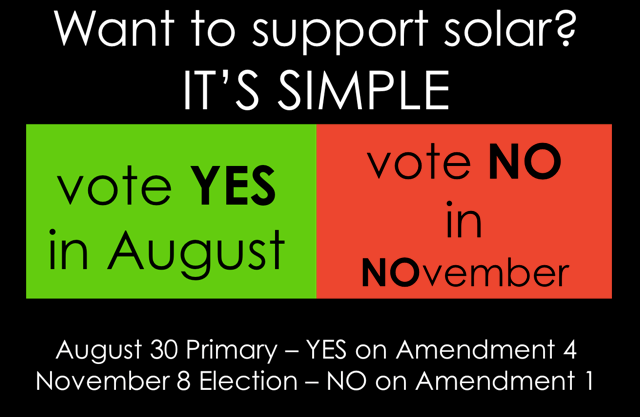
Florida ranks third in the nation for potential rooftop solar output, yet comes in a dismal 16th in actual production. “It defies logic,” says former Governor Charlie Christ. “It’s absolutely absurd.” Northeastern states like New York, New Jersey, and Massachusetts are ahead of the Sunshine State when it comes to rooftop solar, despite snow and cloud cover.
Follow The Money
The utilities in Florida have waged a systemic campaign against rooftop solar because they view it as a threat to their monopoly on power. Investor-owned utilities (IOUs) rack up staggering profits from coal, gas, and nuclear power. They make money through infrastructure projects and rate increases, and to protect their profit margins, wield tremendous power in Tallahassee among our state lawmakers. “The power companies hold sway here, and the consumers are at their mercy,” said state representative Dwight Dudley, the ranking Democrat on the energy subcommittee in the Florida State House.
Florida Power and Light, which proposed a 24% rate hike to the Public Utilities Commission this year, generated $1.65 BILLION in PROFIT last year for its shareholders. The oil and gas industries, which are heavily subsidized by the federal government, are pouring millions of dollars into Florida to thwart the growth of rooftop solar, aligning themselves with the utility companies.
Former Republican legislator Nancy Argenziano, who chaired the Public Utilities Commission until 2010 stated this: “The legislature is owned by utilities. To me, it’s extremely corrupt. The legislature takes millions from utilities, who make billions from the decisions of the PSC. They get what they pay for.”
Every year, the utilities spend millions of dollars on paid lobbyists to whisper in the ears of our legislators. They hold a carrot and a stick, because in addition to the money spent on lobbying, the utilities also spend millions each year on campaign contributions. Since 2007, utilities spent more than $12 million on lobbying, delivering an average of one lobbyist for every two legislators.
More money flows to legislators through PACs, funded by oil, coal, and natural gas interests. Energy magnates the Koch Brothers funnel dollars through various shadowy organizations, where the dark money can be spent without public scrutiny in order to slow the growth of solar in Florida.
In a display of unparalleled greed and deception, the utilities responded to the grassroots campaign mounted by the Southern Alliance for Clean Energy by outspending them and counterattacking.
Vote No On One!
Last year, the Southern Alliance for Clean Energy assembled an impressive and diverse coalition of forces in an effort to make solar more viable in Florida. From Tea Party voices like Debbie Dooley, who helped to found the party, to green organizations like the Sierra Club, the SACE sought to place an initiative on the ballot that would protect rooftop solar in the sunshine state.
The utilities redoubled their efforts, and introduced an initiative of their own. Slickly marketed and blatantly deceptive, the “smart solar” amendment gives more power to the utilities, masquerading as a “green” initiative, while being funded by dirty coal. Investor-owned utilities spent $4 million on the campaign. 60 Plus, a seniors group which got more than $15 million from the Koch donor network, ponied up more than $1 million. They confused petition-signers and even adopted similar language to that of the SACE campaign, ending with deceptive wording which will ultimately appear on the ballot in November.
Should the amendment pass, the utilities will have free rein to hit solar customers with high fees, monthly charges, and up-front costs. And that is exactly what they will do.
Pulling at heart-strings
One manipulative argument from the utilities is that solar customers are unfairly subsidized by those who do not have solar, and that this results in an unfair tax upon low-income families.
This is part of the bait-and-switch campaign the utilities have waged in Florida and in other parts of the country.
First of all, the energy produced from oil, natural gas, and pet-coke is already heavily subsidized by the federal government. The utilities begin with an unfair advantage, and ignore the fact that the energy they produce would cost more if the playing field were level.
Second, the value of energy from rooftop solar gets devalued by the utilities. A recent study by Arizona’s largest utility found that the value of solar is actually 50% more than the costs associated with it. When homeowners install solar on their roof, they are paying for the cost of the panels, not the utility. The excess power that flows back into the grid comes with no other hidden costs like power-plant upgrades, disposal fees, shipping costs, and environmental upgrades. Furthermore, the increased power leads to greater capacity for the utility, including peak usage times. Finally, rooftop solar leads to greater grid security in the event of an outage.
Subsidies for solar are dwarfed by those for oil and natural gas, which reveals that the argument made by utilities is a bold-faced lie. If utilities were so concerned about the welfare of their customers, they wouldn’t be posting billions in profits, doling out huge bonuses to executives, and increasing rates for everyone.
Moving Forward
Utilities must come to grips with the fact that a business model formed a century ago is outdated now, and face the fact that over the next 50 years, renewable energy will change the paradigm of monopoly. In Florida, solar has suffered from the political attacks waged largely by conservatives who are in the pockets of utilities, but that perception is changing rapidly. Many conservatives are shifting their attitudes toward solar, not out of concern for the environment, but because solar gives citizens the ability to become energy independent, and because it is a sound financial investment.
Rooftop solar is a choice many people make to invest in their future, and we should have the freedom to exercise that choice. The oil companies and utilities don’t want you to be able to choose to go solar because they are afraid to lose their monopoly.
Solar Wars 2

Solar in Jacksonville: A battle won, not the war.
Jacksonville Electric Authority made the right decision last month when they tabled the proposal to reduce the buy-back rate for grid-tied solar in Northeast Florida. The fact that the board elected to wait for further study and review is the direct result of concerned citizens speaking out against the changes JEA initially proposed. Unfortunately, a larger battle looms on the horizon.
Vote NO on 1!
The utilities in Florida formed a coalition called Consumers for Smart Solar, circulated a petition through paid canvassers, and received approval from the Florida Supreme Court to place an amendment to the Florida Constitution on the ballot in November. The language of the petition, the amendment itself, and the marketing campaign behind them are misleading. The average consumer may read the amendment and assume that it does in fact benefit the growth of solar, when the reality is that it will place regulatory authority in the hands of the utilities themselves. This will not be good for consumers, despite what the marketing blitz claims.
From the Consumers for Smart Solar website:
BALLOT TITLE: Rights of Electricity Consumers Regarding Solar Energy Choice
BALLOT SUMMARY:
This amendment establishes a right under Florida’s constitution for consumers to own or lease solar equipment installed on their property to generate electricity for their own use. State and local governments shall retain their abilities to protect consumer rights and public health, safety and welfare, and to ensure that consumers who do not choose to install solar are not required to subsidize the costs of backup power and electric grid access to those who do.
The slick advertising campaign, with the slogan “Vote Yes on One, For the Sun,” touts the idea that with this amendment, citizens are guaranteed to be able to place solar on their homes. If Amendment 1 was actually good for homeowners and the rooftop solar industry, solar contractors would embrace the changes. Instead, this proposed constitutional amendment will drastically restrict the growth of residential rooftop solar. The amendment summary employs almost identical language to what JEA used in their rate change proposal, implying once again that those who do not have solar subsidize those who do. This claim is blatantly false, and has been proven so.
According to JEA themselves, net- metering accounted for a revenue disparity in 2015 of $127,000. There are 524 net-metered customers out of over 450,000 JEA customers. This breaks down to $2.82 per JEA customer per year. Contrast this number with the more than 4 million dollars in bonuses JEA paid out to employees last year.
Furthermore, JEA has not accurately assed the value of grid-tied residential solar because they do not account for the fact that the energy they buy is completely green. Utilities nationwide are under federal mandate to increase renewable capacity, reducing the amount of energy they produce from coal and natural gas. Rooftop solar does precisely this.
While many utilities around the country are mired in paradigms of the past and business models that have yet to adapt to the changing energy landscape, others like the OUC in Orlando incentivize and encourage solar. This is a striking contrast with JEA. Here is a link to the OUC website:
http://www.ouc.com/environment-community/solar
Follow the Money!
So who supports this amendment? The utilities themselves do, along with those directly allied with the fossil fuel industry. Consumers For Solar Choice receives money from suspicious bedfellows.
Utilities:
- Duke Energy, $355,000
- Florida Power and Light Company, $595,000
- Gulf Power Company, $380,000
- Tampa Electric Company, $556,000
- Powersouth Energy Cooperative, $30,000
Outside funding, which is not transparent comes from various organizations including 60 Plus Association. This group benefitted from at least 34 million dollars from the Koch brothers since 2010, and secret funding from Arizona’s largest utility to run ads opposing solar. Eventually they were exposed by Arizona Republic.
Floridians deserve better. Amendment 1 is deliberately misleading, and the fact that those who are pushing it are firmly aligned with the fossil fuel industry should let smart voters know that it’s not a good idea to give the fox the keys to the henhouse.
JEA to vote on SolarSmart
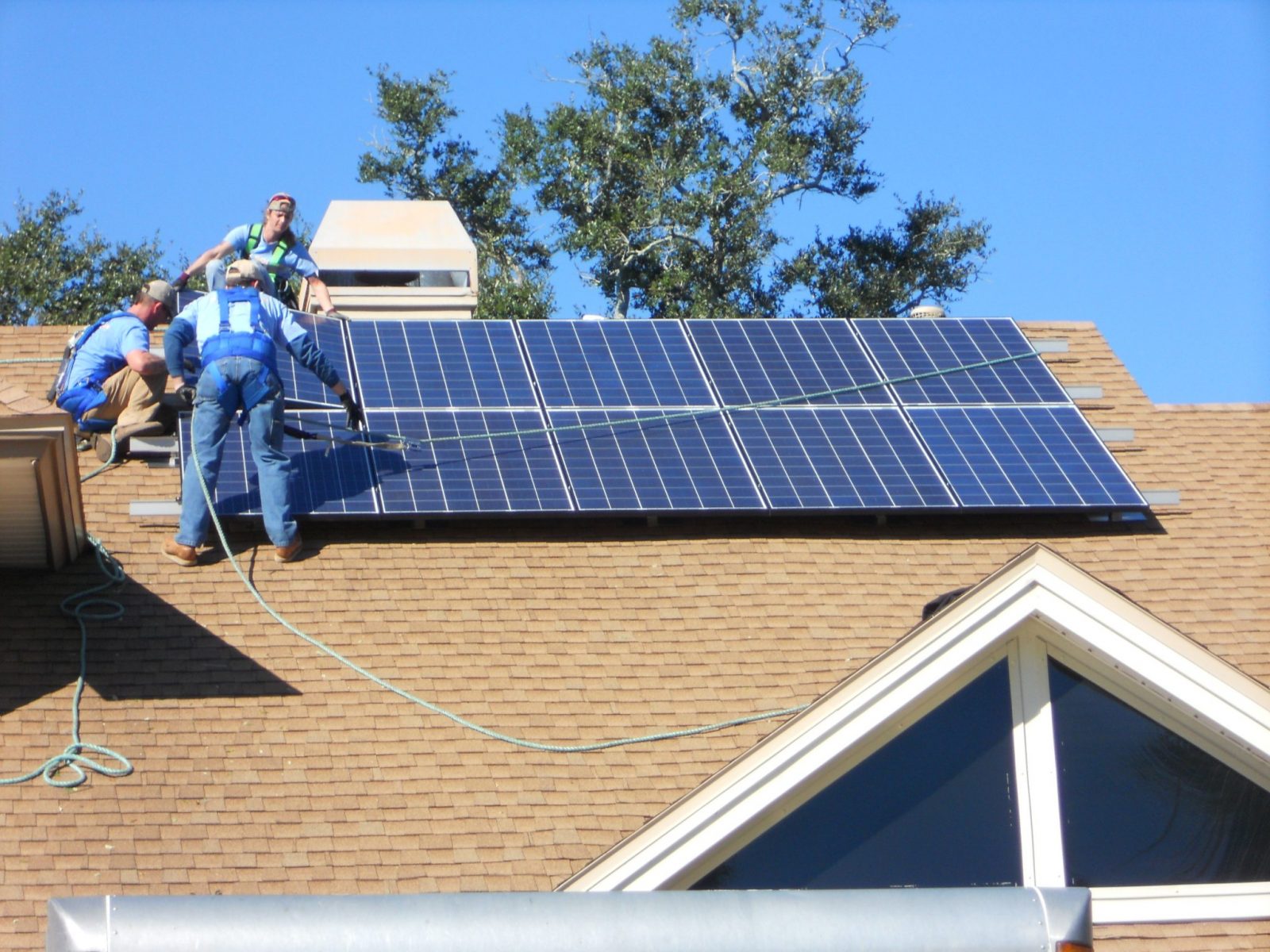

JEA would be taking an unnecessary, premature step in the wrong direction by enacting their proposed SolarSmart policy. JEA had $1.7 BILLION in revenues last year; the bill credits for the entire net-metering program totaled less than .000075% (less than 1/10,000th of 1 percent) of that total. They are spending too much time and money trying to ‘fix’ a solar problem that doesn’t exist, and in doing so, they are harming Jacksonville’s reputation, the job market, and the economy. SolarSmart is bad for JEA, bad for homeowners, and bad for Jacksonville.
JEA claims: JEA wants to pay homeowners a ‘fair’ rate for solar buy-back from rooftop generation.
Fact: JEA bases their buyback rate on an unrelated, pre-negotiated, contract wholesale rate from a PPA with an outside company. Studies consistently value rooftop solar at rates upwards of $0.18/ kWh; JEA believes it is fair to reduce the current rate from retail of $0.11/kWh down to $0.07/ kWh. JEA has done no study on the value of solar. The only fair method to determine a real value would be an independent study on the value of solar in Jacksonville with input/questions from both JEA and the solar & environmental industry.
JEA claims: Current solar customers are being subsidized by non-solar customers.
Fact: Rooftop solar provides quantifiable monetary value in addition to the energy cost*. Distributed generation/rooftop solar benefits everyone on the grid, not just the homeowner. JEA ignores all of these additional benefits. According to many reputable studies, solar power is actually more valuable to the power company than the power it creates.
Fact #2: If JEA wants to discuss subsidies, perhaps we should ask them who is subsidizing their huge bonuses each year. JEA has paid $0.00 total to solar customers for back-fed solar. The approximate value of the bill credits solar customers received in return for their back-fed solar last year was $127,000 in total, about $250 per home per year. JEA bonuses totaled approximately $250,000.
JEA claims: JEA claims on one hand that solar is too expensive and that Florida is not a good area for solar; but then on the other hand they say they are ‘solar friendly’ because they’re building millions of dollars worth of utility owned solar farms all over Jacksonville.
Fact: JEA plans to offer centralized solar to its customers, at a huge premium. They will be able to power 5,000 homes with their centralized solar. A homeowner that chooses to receive 100% of their energy from JEA’s solar farms will pay a 25% higher electric bill than they normally would.
Question: Who (if any) of 5,000 JEA customers will volunteer to have a 25% higher electric bill? SolarSmart is an ‘alternative for residential or business customers who can’t afford’ rooftop solar. Will these customers volunteer to pay 25% more every month? In addition, the utility scale solar will cost JEA ~$5 million. Who is subsidizing that $5 million, if no one buys into the program?
* Some standard factors that add value to solar are: reduced transmission & distribution line losses, fuel hedge benefits, increased grid resiliency, and avoided capacity & capital investment. Additionally, there are environmental and societal benefits (the monetary value is harder to calculate, but everyone agrees that they are extremely valuable) like: cleaner air, conserved water, preserved open space, and reduced climate impacts.


